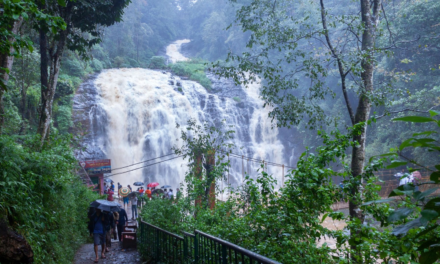Varanasi, often called Kashi or Banaras, stands as one of the oldest continuously inhabited cities in the world. Located in the Indian state of Uttar Pradesh, on the sacred banks of the River Ganga, this ancient city has been a center of learning, spirituality, and culture for more than 3,000 years. Varanasi is not just a destination—it’s an experience that captures the very essence of India’s timeless traditions, faith, and philosophy.
A City Older Than History

According to Hindu mythology, Varanasi was founded by Lord Shiva, making it one of the seven holiest cities (Sapta Puri) in Hinduism. Historical records and ancient texts describe it as a thriving center of civilization long before the rise of Buddhism and Jainism. Even travelers like Megasthenes, Xuanzang, and Mark Twain have marveled at the city’s antiquity. Mark Twain famously wrote, “Benares is older than history, older than tradition, older even than legend, and looks twice as old as all of them put together.”
The Sacred Ganga and the Ghats
The River Ganga is the lifeline of Varanasi. Along its western bank lie more than 80 ghats—stone embankments leading down to the water, each with its own history and purpose. The ghats serve as stages for life’s greatest rituals: from the joyful splashing of morning bathers to the solemn cremation ceremonies that mark the end of life’s journey.
The Dashashwamedh Ghat is the most vibrant of all. Every evening, the Ganga Aarti takes place here, where priests perform synchronized rituals with fire lamps, chanting, and music in devotion to the river goddess. The sight of hundreds of lamps reflecting off the flowing water creates a mesmerizing spiritual atmosphere that attracts pilgrims and travelers from around the world.
In contrast, the Manikarnika Ghat is where cremation ceremonies take place around the clock. It is believed that dying or being cremated in Varanasi breaks the cycle of rebirth, granting the soul moksha—liberation from the cycle of life and death.

Temples and Spiritual Significance
The city is often called “The City of Temples” because every street and alley seems to host a shrine. The most revered of all is the Kashi Vishwanath Temple, dedicated to Lord Shiva. The temple’s golden spire gleams under the sun, symbolizing the city’s divine energy. Pilgrims believe that a visit to this temple fulfills one’s spiritual journey, washing away the sins of lifetimes.
Other notable temples include the Sankat Mochan Hanuman Temple, the Durga Temple, and the Tulsi Manas Temple, where the famous Ramcharitmanas was composed by poet-saint Tulsidas. Each temple has its unique story, architecture, and rituals that reflect the city’s deep connection with faith.
A Melting Pot of Culture and Learning
Beyond its spiritual aura, Varanasi has always been a cradle of art, music, and education. The Banaras Hindu University (BHU), founded in 1916 by Pandit Madan Mohan Malaviya, is one of India’s largest and most prestigious centers of learning. Scholars from across the country come here to study philosophy, Sanskrit, Indian music, and traditional sciences.
The city is also renowned for its contribution to classical Indian music. The great sitar maestro Pandit Ravi Shankar and shehnai legend Ustad Bismillah Khan both hailed from Varanasi, helping the city gain global recognition for its musical heritage. Even today, the sound of tabla, sitar, and flute can be heard drifting from courtyards and temples, keeping the traditions alive.

Crafts, Cuisine, and Colors
Varanasi is equally famous for its craftsmanship. The delicate Banarasi silk sarees, woven with gold and silver threads, are treasured possessions for Indian brides. Visiting a weaver’s workshop in the narrow lanes of the city gives a glimpse into the centuries-old art that continues to thrive despite modern challenges.
Food in Varanasi is another sensory delight. From spicy chaats and kachoris to the creamy lassi served in earthen cups, the city’s street food scene is a gastronomic adventure. Don’t forget to try Banarasi paan, a sweet betel leaf preparation that has become synonymous with the city’s culture.
Life and Death on the Same Shore
What makes Varanasi truly unique is how it embraces both life and death with equal reverence. On one side of the ghats, people bathe, pray, and celebrate festivals like Dev Deepawali, when thousands of lamps light up the riverfront. On the other side, funeral pyres burn steadily, symbolizing life’s impermanence. This coexistence of opposites defines the city’s profound philosophy—acceptance, devotion, and detachment.
A Journey of the Soul
A visit to Varanasi is not just a physical journey; it’s a spiritual awakening. Walking through its narrow lanes, hearing the temple bells, and witnessing the eternal flame on the ghats can stir deep introspection. Whether you come as a pilgrim, a traveler, or a seeker, Varanasi has a way of leaving a lasting impression on your soul.
Conclusion
Varanasi is not merely a city; it’s an emotion—a place where time stands still, where spirituality breathes through every chant and flame. It represents the continuity of Indian civilization and the belief that life, in all its complexity, is a sacred journey. As the sun rises over the Ganga, casting golden reflections on the water, one understands why Varanasi is called The Eternal City.
Top Benefits of Buying International Travel Insurance





